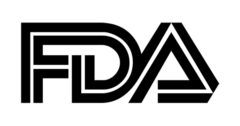
Providers, OEMs and suppliers all say that they’ve been impacted by complexities in the reimbursement system. For example, bundled payments and an increased burden of evidence have changed the way that products are developed and launched. One theme has arisen from the many conversations—not a new theme, but a necessary reminder: the sooner a company includes reimbursement in their commercialization preparations, the better-armed they are for market entry.
Over the last decade, the biggest barrier to market entry was FDA and the regulatory process, says Kelli Hallas, Executive Vice President of Emerson Consultants. Today, she says, the reimbursement process has edged past to the top spot.
“When you have a 510(k), you go through the regulatory process and assume that you will have the ability to use preexisting codes and the same coverage from payors,” she says. “We’re finding that coverage from the insurance companies has been a problem, even if the product is a 510(k).The payors want high levels of scientific evidence that support long-term outcomes of the product/procedure.”
Companies do not have to include investigational device exemption (IDE) studies or two-year follow-ups as part of the 510(k) process, so traditionally, they don’t conduct them. Hallas says that may have to change, because payors are not covering new technologies—even those in the 510(k) pathway—without long-term data. She says that two-year follow-up studies are now being requested by payors.
Richard Baer, M.D., comes from the payor side. He previously served as Medical Director for the Medicare RAC Validation Contractor and as Lead Medical Director for National Government Services, one of the largest Medicare administrative contractors in the U.S. Baer now serves as a reimbursement consultant.
“The biggest challenges to obtaining reimbursement from a payor come from not establishing a business case or a cost-effectiveness argument. It’s all about establishing medical necessity for that item or service,” he says. “The literature has to establish improved health outcomes, because that’s the buzzword now.”
Baer says that the key to obtaining reimbursement is the quality of the scientific literature. For orthopaedic devices, that may mean robust, double-blinded control studies at academic centers. He says that studies should push for large patient populations, with studies of at least 100 patients looking more credible.
“The thing that payors are looking for, and is new in the landscape as a barrier to coverage, is longer-term evidence. In the past, particularly for a device, a six-month study was sufficient. Now, payors want to see two, three or five-year follow-ups to make sure that the item they’re paying for is durable and the benefit is sustainable,” he says. “One thing that payors are now requiring as a product is coming to market is that companies go back and do another study.”
Hallas agrees. She notes that many of the studies being conducted are postmarket, undertaken to satisfy the requirements from payors for coverage, frequently at great expense to the device company.
One step that companies should take to ensure coverage is to open channels of communication with their prospective payors.
“When a clinical protocol is being developed to support the regulatory strategy, companies need to have communications with the payor community to ensure that the data they’re collecting will fulfill the payor’s requirements for coverage,” she says.
Baer agrees. “When you’re developing your strategy for a new product, the requirements of the payors need to be taken into account. Your strategy has to extend from project startup through payor coverage, not from project startup through FDA clearance,” he says.
The increased burden of evidence isn’t just affecting device manufacturers, but their suppliers, as well.
Stephen Spiegelberg, Ph.D., is President of Cambridge Polymer Group (CPG), a contract research and raw materials provider. He says changes in reimbursement have negatively impacted his clients and consequently, his business.
“[Clients have] been getting pushback from insurance companies, particularly on premium products—items that demonstrated longevity in the laboratory, and therefore have a higher premium attached to them.”
As a result of insurance company pushback on pricing, CPG is seeing less revenue from royalties. Clients that have utilized some of CPG’s affected technologies will sometimes decide not to sell the device because they can’t find an appropriate market. To help his clients renegotiate with hospitals and payors, Spiegelberg seeks to provide recent, relevant clinical studies to support the medical benefits of the technology.
As an example, he points to a recently published study on the clinical benefits of highly crosslinked polyethylene in the knee. That study serves as longer-term evidence that crosslinking improves knee longevity, for clients to share with payors and hospitals.
Spiegelberg suspects that reimbursement in the U.S. will one day reflect the landscape in other established markets, specifically the U.K. and Canada, where premium products already face reduced reimbursement.
“I think this trend continues, at least until additional clinical data comes along and demonstrates that these new materials are clinically superior and warrant a bump in price,” he says.
Baer says that moving forward, he cannot see the reimbursement process getting worse. He says that payors have to start paying for new technologies soon. For companies struggling with reimbursement, or thinking about entering the market, Baer emphasizes the importance of early planning.
“A company might have a device and they’re expecting to market and sell it and be reimbursed by a payor, only to discover that the device isn’t separately reimbursed, but bundled into a procedure,” he says. Baer says that companies then have to compete on price with similar technologies.
To avoid that complication, or to properly prepare for it, device manufacturers must gain a thorough understanding of where they fit in different payment scenarios. Different payors have different methodologies, he says.
“Where you might get a separate payment from a commercial payor, you may get a bundled payment from Medicare, or vice versa,” he says.
Questions on this article? Email Julie Vetalice.




